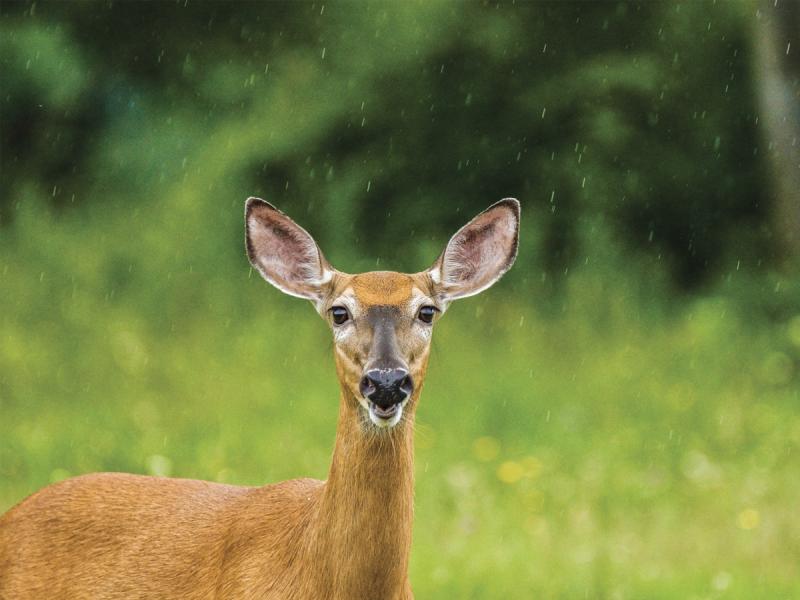We often refer to dollars as bucks, probably from the early trading of buckskins for dollars in Colonial America. You can pass the buck, which is American poker slang referring to a buckhorn-handled knife that was passed around the table to indicate whose turn it was to deal.
But bucks (and does) are the bane of gardeners because they can jump 7 feet high and up to 30 feet distance. Deer are nocturnal, so they are active at night. They are also crepuscular, which means they are active during twilight. This is why you may wake up one day and find your tulips, hostas, pansies, violas and buttercups all eaten by deer.
The secret is to plant flowers that deer usually will not eat. Instead of tulips, plant daffodils, which deer tend to avoid. For summer-blooming annuals, choose deer-resistant flowers such as bachelor buttons, petunias, salvia, snapdragons, marigolds, zinnias and four o'clocks. Vines that deer avoid include moonflowers and morning glories.
Bachelor buttons (Centaurea cyanus) are easy to grow and not only bloom in traditional shades of blue, but are available in pink, dark red, and white. The small button flowers are 1 to 1 1/2 inches across on stems that can reach 3 feet tall. They look good in a mixed flower bed. Bachelor buttons are also great as cut flowers. Grow them in full sun.
Petunias are easy to grow and widely available. Most petunias will flower all season long with very little care. They do best in full sun and come in a wide range of colors from white to purple and even yellow. For an upright spike of flowers that deer leave alone, try salvia. It is fine in the hot sun.
Deer hate snapdragons, whose trumpet-shaped flowers when pressed between fingers snap like a dragon. Snapdragons can reach 3 feet tall with flowers up and down their stately spikes. They are available in almost every color along with many bicolors.
Common marigolds thrive in the summer heat and not only repel deer but also many harmful insects, which is why gardeners mix them in with vegetable plants. Marigolds are widely available in colors ranging from white to orange and yellow. The vining moonflowers and morning glories will go from seed to vines over 6 feet long in just a few weeks.
Four o’clocks (Mirabilis jalapa) will easily grow from seed to 3-foot-tall, almost shrubby flowering plants in a single season. And yes, they really do tell the time by opening their fragrant flowers after the heat of the day, usually around 4 o'clock. They are available in a wide range of colors including yellow, pink, red, and even striped and speckled.
For added protection you can always fence in your flowers, but the fences need to be ridiculously high at 7 or 8 feet tall. Instead of an 8-foot-tall fence you can discourage deer with two parallel 4-foot-tall fences set 4 feet apart.
So rather than battle the invading deer, you may want to buck up and plant flowers they simply do not like to eat. After all, deer damage can cost big bucks.























































